How to Choose Correct Lighting for Your Home
A wisely chosen lighting system can transform the room and make it look bigger, create cozy areas, and set the focus where necessary.
5-Minute Crafts will tell you how the balance of light and shadow can change the space and the energy of a room.
Why correct lighting is important
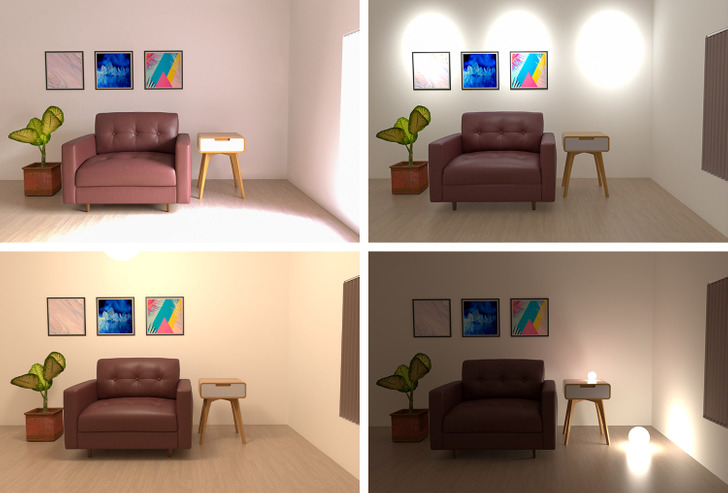
Lighting is an important element of design, thanks to which the same room can look different. A skillful combination of natural and artificial light can visually transform a gloomy room and make it look prettier. A different combination of light and shadow can make a room comfortable, create a special atmosphere, and add different accents to the interior.
Designers use different tricks of placing light sources for performing different tasks — for example, you can light up the whole room or direct the light only to nice-looking curtains.
The overall lighting (the one that lights up the whole area inside the room, including the walls) is the main thing.
Types of lighting sources
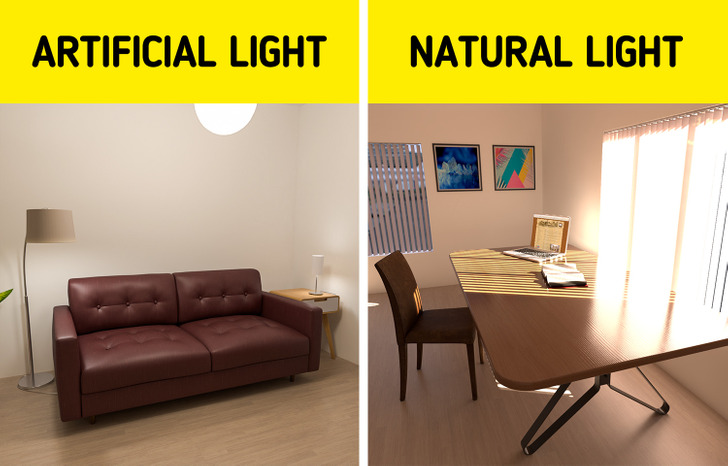
When it comes to the correct placement of light sources, it’s not only chandeliers and table lamps that are important but also natural daylight. Designers carefully study where and how the sun’s rays fall because this factor affects the arrangement of objects in the interior.
Artificial lighting can be architectural and decorative.
- Architectural lighting is a different combination of hidden sources of light for the overall lighting of the room or for emphasizing certain materials. As a rule, such lighting is hidden in the architecture of the room (corners, arcs, stairs) or on interior objects (closets, beds). For example, lamps under the ceiling and on the floor, LED strips integrated into the cabinet, etc. Architectural lighting leads the eye of the viewer through the space both inside and outside the room.
- Decorative lighting helps set accents and draw attention to certain objects. It should match the architectural lighting, but at the same time, it can be used separately. For example, just switching on a lamp near the armchair to read a book is more than enough.
If several downlights are used in a room with light walls, they must be combined in terms of color temperature measured in Kelvin. The higher the Kelvin value, the colder the light. And vice versa — the lower the number, the warmer the light. For example, cool architectural lighting at 2,700 K pairs well with decorative lighting at 2,400 K. For comparison, the sun at noon emits light of about 5,500 K.
Another indicator of the light quality of some lamps is the color rendering index (CRI). It is measured from 0 to 100 and means how much the lamp distorts the colors in the interior. To prevent this from happening it is recommended to use a CRI value of at least 80.
Main concepts of lighting that will transform the interior.
- Always place sources of light at a distance of 12 inches in front of tall elevations such as a fridge or a closet. This is enough to make the contents clearly visible, and it will create focus on the materials of the furniture.
- To outline or enhance an object on the wall, place a downlight that will be directing light to it. But if at the same time, you add a shadow around it by muting the main lighting, the focus on this object will be even stronger.
- The glow of LED strips will add warm colors to wood products, as well as accents on interior items in daylight.
- Artificial light can be used not only at night but also in combination with natural light.
- Light sources that help create accents draws attention to design, decor, or separate elements of the architecture. When used correctly, this trick can help transform the room completely.
- The expansive glazing of the windows allows daylight to create a feeling of open and bright space inside the room.
- If you want to make the room “warmer,” use diffused light.
- Directional light used to focus on the edges of the room will create the impression of a wider space.
- Artificial light sources help set accents and draw attention to brightly lit objects. For example, you can light up a vase on the dining table or the whole closet or kitchen cabinet.
- It’s better to choose chandeliers (and other architectural lighting) with colder shades of light in rooms with light walls. They pair well with the warm range of table lamps (and other decorative lighting).
- When light is reflected from light walls, it creates an illusion of a wider space. In this case, a mirror gives the maximum reflection.
- Too tall ceilings can be visually decreased with the help of low-hanging downlights.
- And, of course, light sources shouldn’t be obstacles for moving around or overall visibility.
What lighting is best for different rooms
Apart from general universal lighting rules, there are some nuances for different rooms.
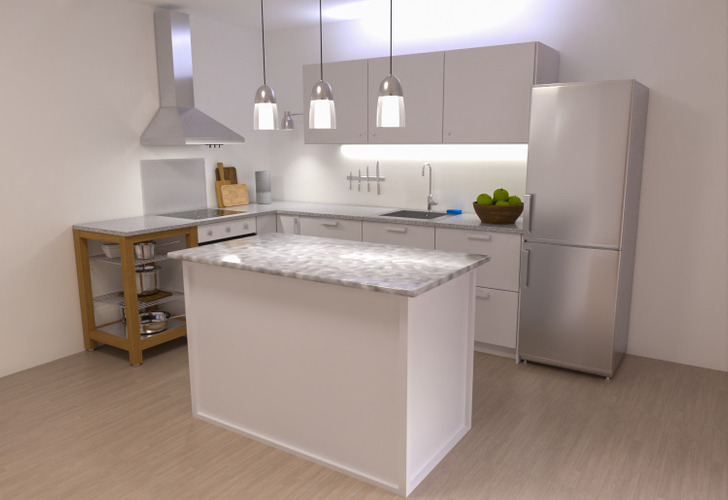
Kitchen. Lighting over the upper part of kitchen cabinets will enhance the overall light. It’s necessary to direct additional light sources to the center of the kitchen island. If you have open multi-tiered shelves, you can place a backlight under each of them, as well as add an LED strip under the hanging cabinets so that the entire working area of the kitchen is lit well. The areas of cooking and cleaning (actually all working surfaces) require good lighting. The light source directed at the countertop should not be located behind you so as not to create a shadow. Lamps can be visible but it is preferable to hide the light bulbs. Also, the light should not fall directly into your eyes.
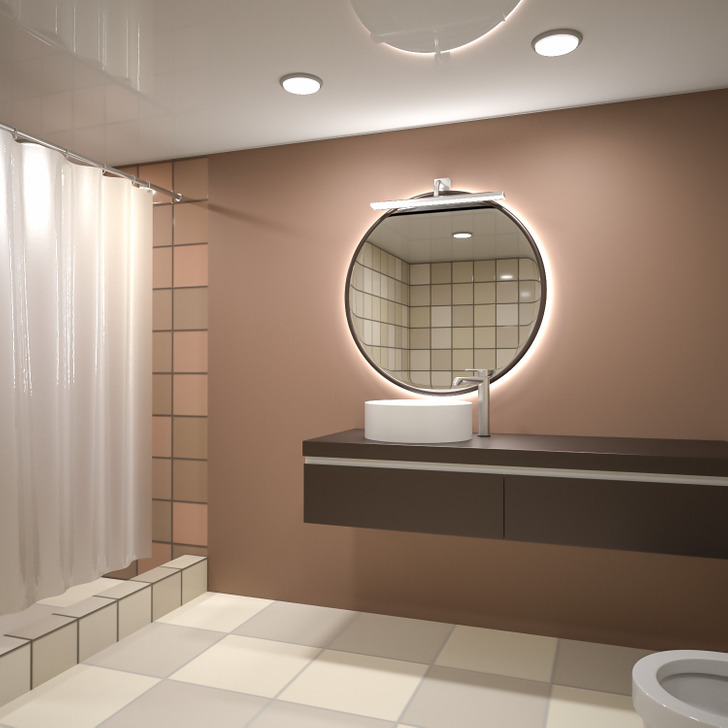
Bathroom. According to the standards, every square foot of space in your bathroom requires at least 1 watt of light. However, this is often not enough. You can set 2 sources of light in a big bathroom — for better lighting. Opt for white light only to see the natural color of your skin without distortion (for applying makeup, for example). If you don’t need bright lights all the time and want to occasionally dim the lights to relax in the bath, use lighting with different levels of brightness. It is important to remember that this room is always wet that’s why it should be an expert who will install light sources.
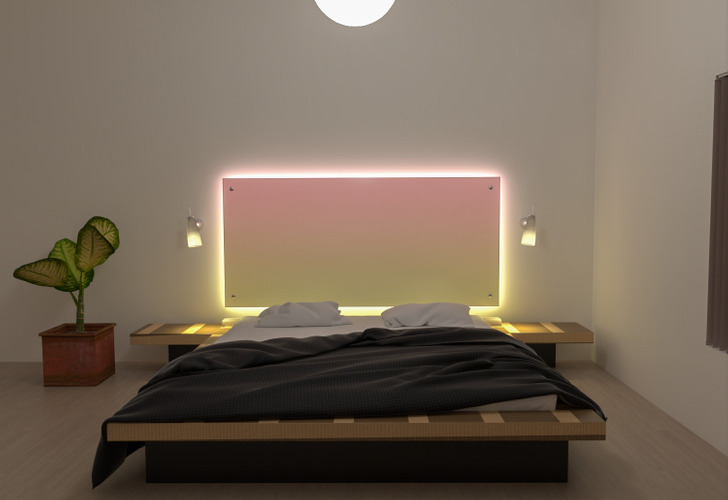
Bedroom. This room requires multi-layered lighting. For example, in addition to an overhead light on the ceiling, a bedside lamp can be used to create a calm atmosphere and direct the light down for comfortable reading. If you don’t want to occupy the space on your bedside table, pendant lights over them will be a perfect solution. You can also use a combination of light on the ceiling and recessed lighting over the headboard for a softer glow.
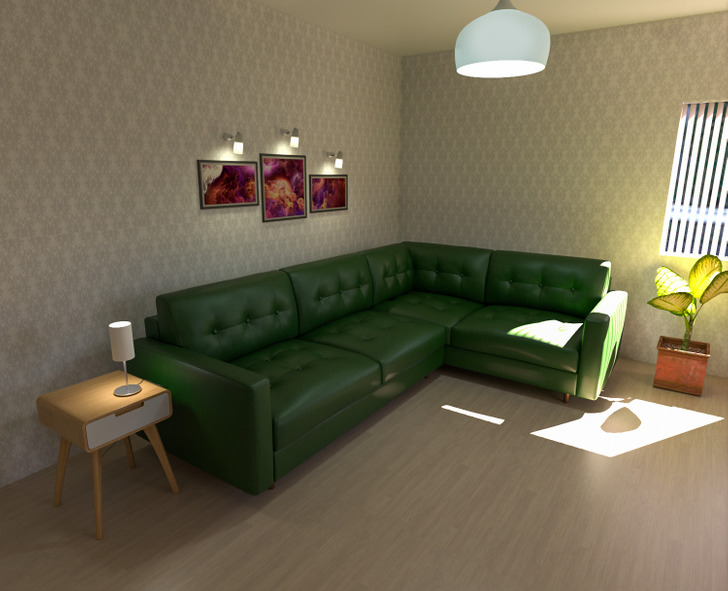
Sitting room. Designers say one should never rely on one light source in this part of your home. Try to understand what emotions you want to feel in this room. The atmosphere of coziness can be created with the help of light in the center of the interior as well as the surrounding downlights and floor lamps. If there are paintings or other art objects in the room, they can be accentuated with additional light. In small rooms, a few tables and floor lamps can help to create warmth and comfort there, however, when it comes to large rooms, you will additionally need an overhead light.
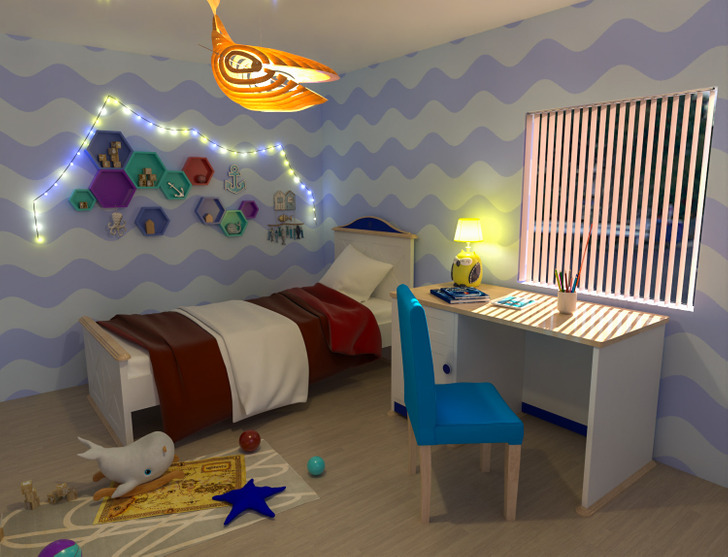
Playroom. The rules for lighting this room are very simple — it should be light and positive. The overhead light should be there for general lighting as well as to make the room look bigger. At the same time, you can bravely experiment with unusual lamps.